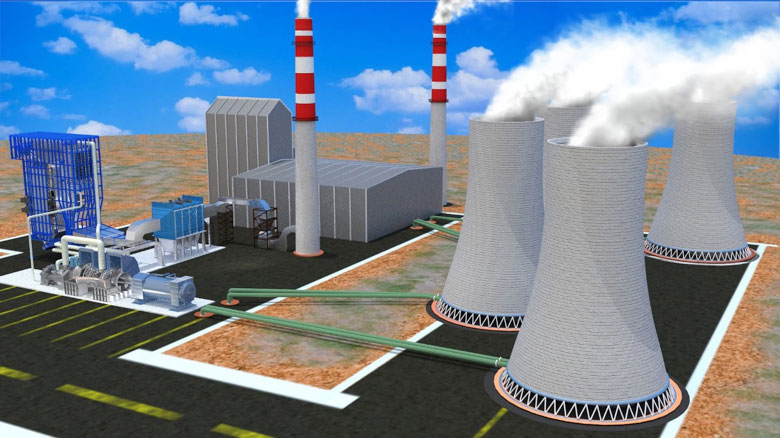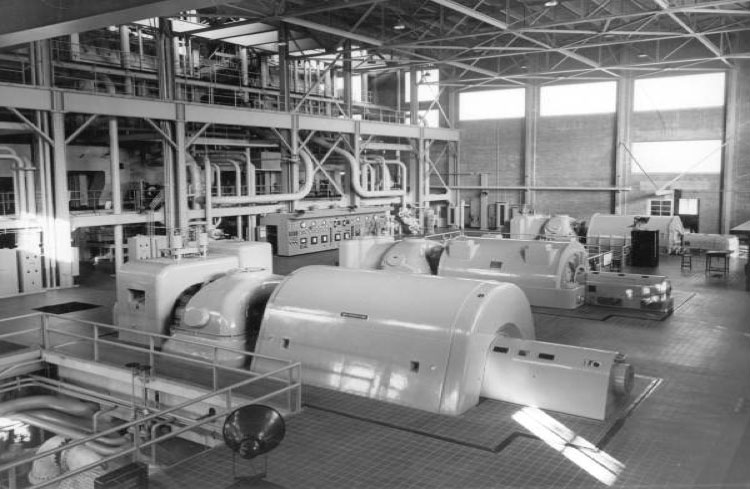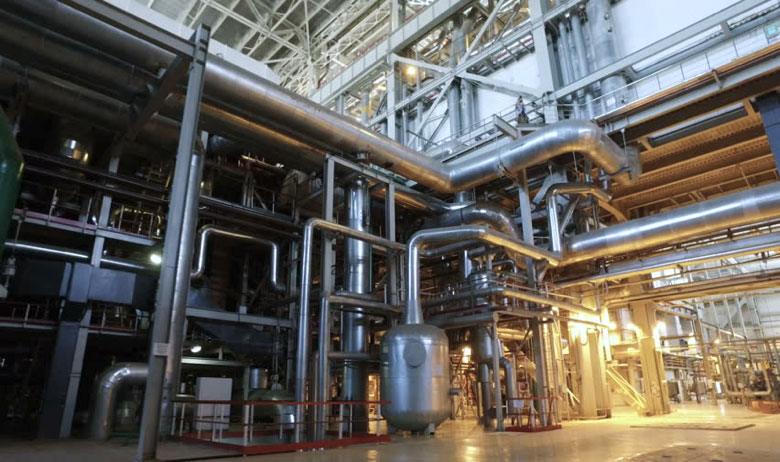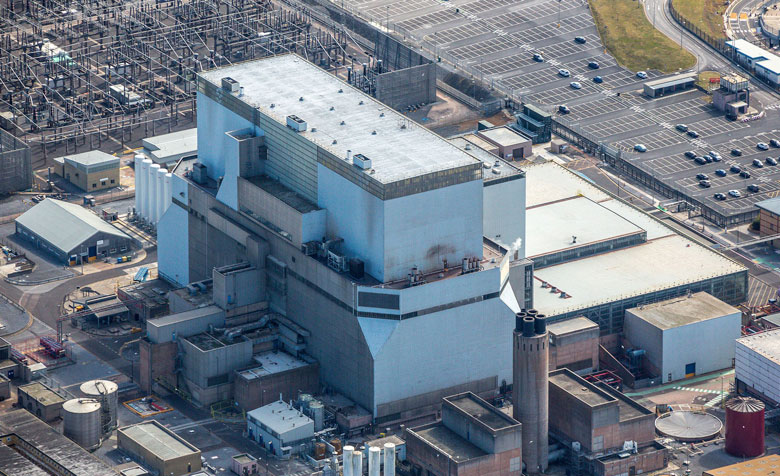August 13, 2019
A steam power plant uses water under pressure to operate. The water is present in pipes; it enters the boiler where the heat turns it into steam. This steam passes through the turbine, which rotates and in return the dynamo in the generator rotates and produces electricity.

Source: youtube
The steam then passes through the condenser which converts it back into the water. This water then goes back into the same pipes, and the process is then again repeated.
The steam power plant provides the majority of electricity around the world. It generates more than half of the worlds power generation. This plant is also known as a thermal power plant.
The major components of this power plant are:
Boiler:
It boils the water so that it can turn into steam and move the turbine.
Steam Turbine:
The turbine runs on the steam. It, in turn, runs the dynamo of the generator.
Condenser:
The steam that escapes the turbine passes through the condenser to cool down and turn back into liquid form. The plant can reuse the same water over and over again.
There are several factors which can increase or decrease the efficiency of the power plant. The factors which affect them are:
1. Cost of Land Acquisition:
The power company has to buy the land which surrounds the power plant. It has to be economical, as the cost of operating and purchasing will increase the budget. It will diminish the profit margin. There are intervals when you need to relocate the local community to a safe distance. It can result in conflict as the locals may not be willing to cooperate.
The energy company can then plan to acquire land that can both suit its need and prevent any ill will from the consumers.

Source: floridamemory
2. Accessibility of Resources:
The sources which a plant needs to run has to be nearby as the distance from the power plant will create transportation problems. A steam power plant needs plenty of water to run on steam. It’s better to build a power plant near a river or lake. If that is not possible, then the plant can also operate near the sea.
The water is not the only source which a plant needs. A power plant runs on fuel. Therefore, a constant supply can assure a smooth-running plant and more production. There are instances it is not possible to build a plant near the source of extraction. In those cases, you have to construct a network of roads, railroads, airstrips, and river lanes to provide the material. The transportation has to be smooth and unstoppable to remove any hindrance in production.
3. Location of the Power Plant:
The area of the power plant can also affect its results. The energy production facility should be near enough to the population to prevent power losses. However, you must be aware that in case of an accident; the community should be far away to avoid any hazard to them.
The power industry relies on heavy machinery to function. The land should be solid enough to support the weight of the equipment. The industry can build a solid foundation which will assure a stable structure. It will prevent any disaster and increase the efficiency of the plant.

Source: shutterstock
4. Design of the Power Plant:
The layout of the power plant can increase or decrease the efficiency of energy production. The architect can design it in such a way that the whole process can be in a single or double formation. The machinery which is next in line should be near to the first to prevent any lag in the transference of material. The design of the equipment can also increase the output coefficient by many factors.
5. Skilled Labor:
The employees are the main component that will determine the output of the power plant. Their capability will determine the efficiency of energy creation. Since unskilled labor will cause more problems and hinder your production activities.
The plant should employ skilled labor as the workers can handle the process in a better way. They can tackle many problems that will arise during the production, and ensure the smooth operation of the plant. Furthermore, if you hire skilled labor, you will increase production capability.
6. Better Handling of Waste:
The industry has to process waste before releasing them in the environment properly. They can use different innovative techniques to reduce pollution. Due to the many restrictions put in by the various environmental agencies, the plant has to dispose of material properly. The waste has to go through many processes before it is safe to dump them. This process can redirect a lot of attention towards it causing an invaluable loss in resources.
7. Better Equipment:
The steam power plant operates with the help of different equipment. It requires the overhauling of the material and the continuous upgrade of pipes and valves. The steam power plant involves highly anticorrosive equipment. Moreover, the amount of pressure is quite massive, so the system needs to be strong and resilient.
High-pressure ball valves prevent the steam from leaking since they can withstand immense pressure. The pipeline carrying the steam requires a reliable and durable valve like the SIO high-pressure ball valve.
8. Suitable Fuel:
The fuel which the power plant will use to generate heat should be ideal for its need. The source of the fuel should be local. It will save you cost and provide your country with the opportunity to use its resources instead of relying on a foreign nation. There are several possibilities, ranging from fossil fuels to renewable green energy like solar, biogas, and geothermal.

Source: howstuffworks
It will be better to use green energy sources as this will decrease the chances of pollution, and also give you cheaper energy. The entire operation will depend on the choice of fuel, so you will have to plan carefully.
The efficiency of the steam power plant can increase with a little bit of innovation and engineering. The output may not reach the level you desire, but at least you will be able to improve the system.
In this episode, I sat down with Beejan Giga, Director | Partner and Caleb Emerson, Senior Results Manager at Carpedia International. We discussed the insights behind their recent Industry Today article, “Thinking Three Moves Ahead” and together we explored how manufacturers can plan more strategically, align with their suppliers, and build the operational discipline needed to support intentional, sustainable growth. It was a conversation packed with practical perspectives on navigating a fast-changing industry landscape.